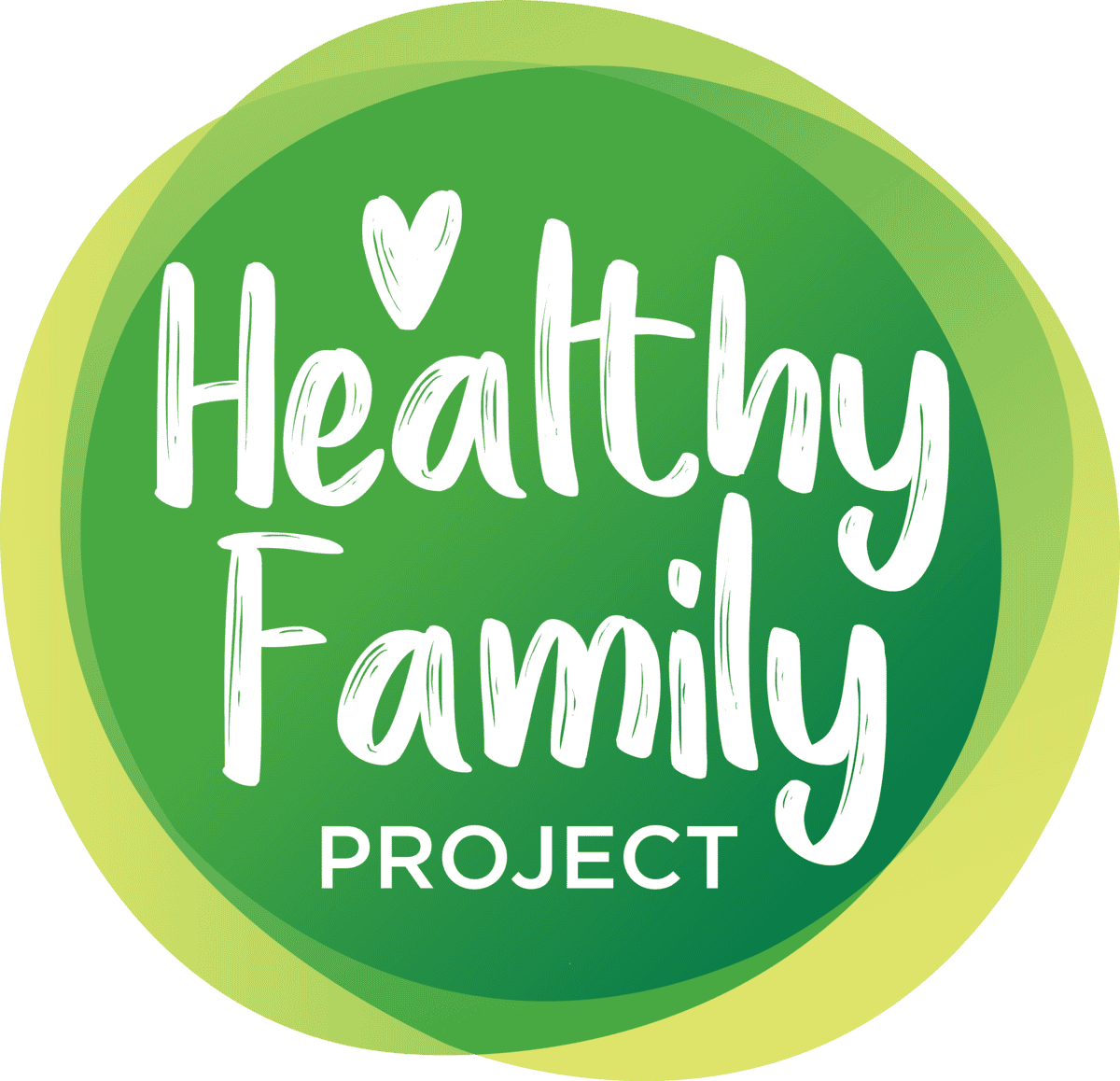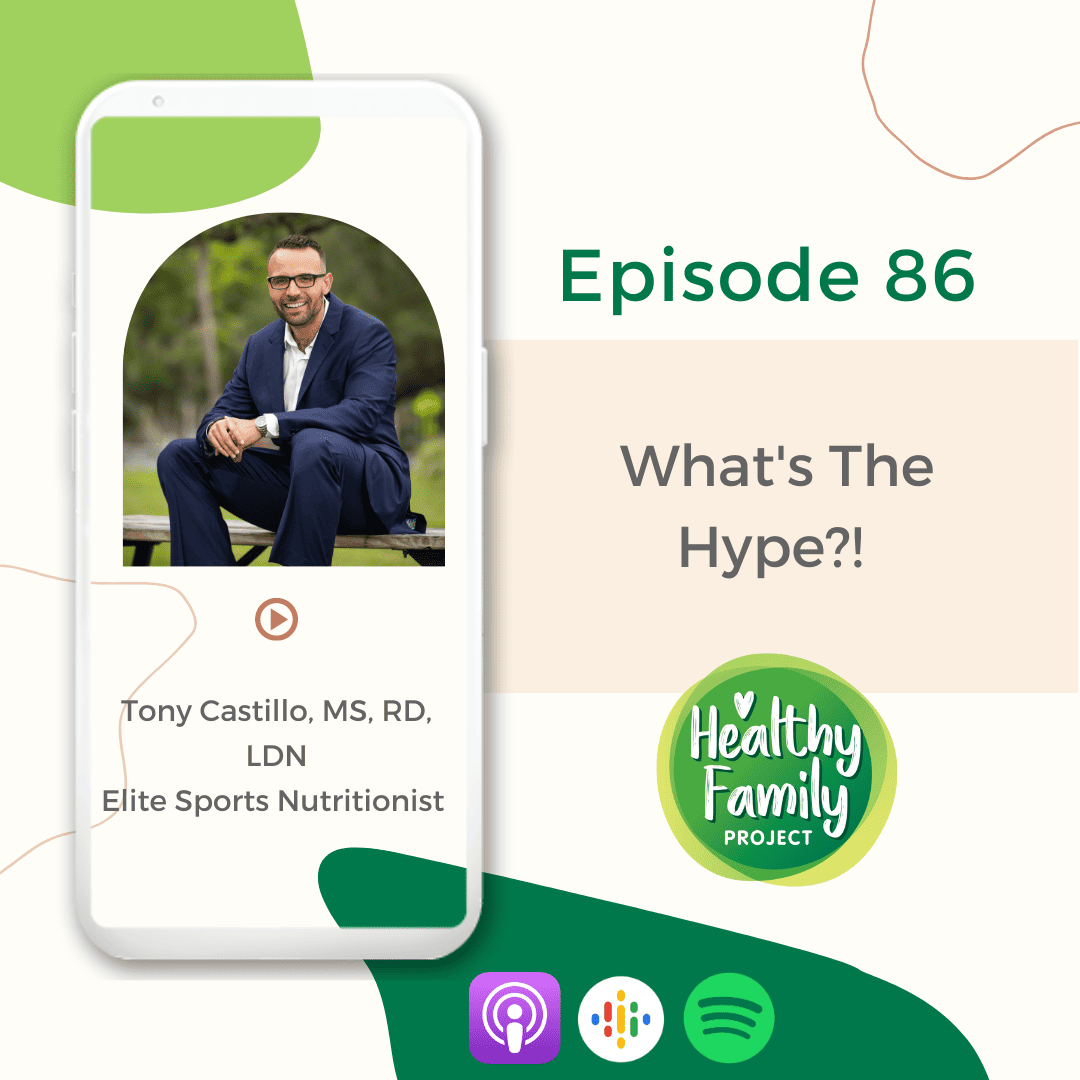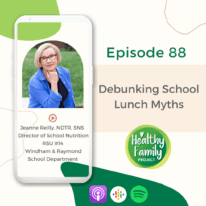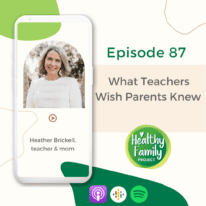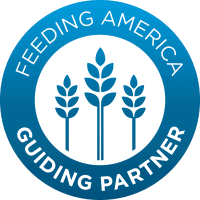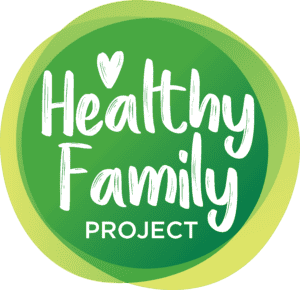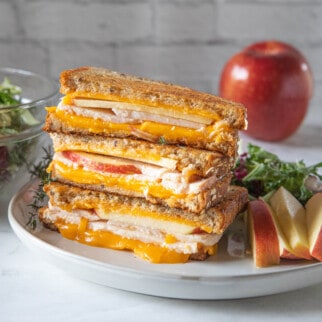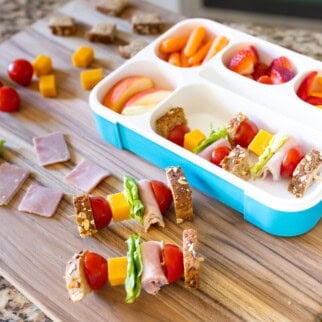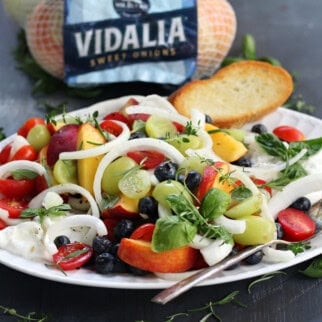Episode 86: What’s The Hype! Learn More About Workout Drinks & Supplements
Learn from Tony Castillo about What’s The Hype! about workout drinks, supplements and more in Episode 86 of the Healthy Family Project Podcast. Tony is a Registered Dietitian and Elite Sports Nutritionist!
Today we are talking with Tony Castillo registered dietitian, dad, husband, Instagram extraordinaire.
He has led a passionate life in the nutrition space and spent time as a sports nutritionist at the University of Florida and for the Toronto Blue Jays.
I get the honor of chatting with him today as we ask What’s the Hype! We are covering hydrating powders, creatine, pre-work out supplements, green powders and probiotics.
Tony joined us just three episodes ago on episode 83 to talk about sports nutrition for kids and teens. You’ll definitely want to check that out.
I could not wait to have him back to for this fun episode as we dive into trending hyped up topics in the world of sports nutrition.
We are asking WHAT’S THE HYPE!?! Reminder we are now on You Tube with our episodes if you prefer to watch.
Just quick disclaimer, always check with your family doctor before making any changes in your health care.
Listen to Episode 86: What’s The Hyde! Learn More About Workout Drinks & Supplements
What We Cover
Want to skip straight to a hot topic? See timestamps below. But of course, we recommend listening all the way through to get all the great tips and tricks!
5:14 About Tony Castillo and his nutrition approach
8:49 What’s the hype around electrolyte drinks
9:56 What electrolyte drinks actually provide and why it matters
11:16 What you should be looking for in electrolyte products
15:09 The most appropriate type of sports drink for teens
16:12 What’s the hype around creatine
18:29 Who creatine is great (and not so great) for
22:50 The dose of creatine you should be taking and why
28:22 What’s the hype around greens powder
30:48 What the research has revealed about greens powders
33:20 What’s the hype around pre-workout products
41:06 An analogy about probiotics that rings true
43:14 What resources you should use before investing in probiotics
44:34 The difference between probiotics and prebiotics
Watch It!
Relevant Links
Other Episodes to Check Out
- Psychologist Tips to Support Your Teen Athletes Mental Health
- Sports Nutrition for Kids and Teens
- Meditation Benefits for Kids
Healthy Family Project Facebook Group
Don’t forget to join our Healthy Family Project Facebook group if you haven’t already to be part of the conversation around our episodes. Bookmark the healthyfamilyproject.com website ASAP because we have added several great recipes in addition to our already more than 600 registered dietitian, family-tested meal ideas.
Listener Survey!
Thank you so much for supporting the Healthy Family Project Podcast! We’d love it if you could take 5 minutes to let us know how we can bring you the best possible content for future episodes. Take the survey here.
Healthy Family Project Podcast
Conversations covering hot topics in the world of health, food and family with a dose of fun. Helping families ease their way into a new fresh and healthy world.
Be on the lookout for new bi-weekly episodes and don’t forget to subscribe on Apple Podcasts, Google Podcasts, Spotify or your favorite podcasting site. If you like an episode, make sure to leave a rating and comment.
If you are interested in being a guest on the Healthy Family Project podcast, contact amanda@healthyfamilyproject.com with your topic idea for consideration.
Transcript for Episode 86
This transcript was produced by Otter.Ai. Please forgive any misspellings and grammatical errors.
0:00:09 – Amanda
Welcome to the Healthy Family Project podcast, covering the hot topics in the world of health, food, and family with a dose of fun. Hi everyone. Welcome to the Healthy Family Project podcast. I’m your host, Amanda. I’m glad to be back today. A we have an amazing guest, a previous guest, but he hasn’t been able to join us on video just yet. So, Tony Castillo, he was with us on episode 83 so just a few episodes ago. And we talked about sports nutrition with kids and teens.
0:00:43 – Amanda
So a little bit about Tony. He’s a registered dietitian. He’s a dad. He is a husband. He’s an instagram extraordinaire. If you don’t follow him on Instagram, we’ll link up to him in the show notes. He shares some super fun information over on his Instagram as well. He has led a passion filled life around nutrition, served as a sports nutritionist at the University of Florida and for the Toronto Blue Jays.
0:01:13 – Amanda
Super cool. And then we have the honor of having him here today. So, hi. We’re going to ask him. He’s really fun. So we’re going to do something fun today called what’s the Hype? And we’re going to talk about some of those nutrition, I guess topics, if you want to call them out there right now that maybe we want to learn a little bit more about, understand how these different things are looked at in the scope of approvals and safety.
0:01:43 – Amanda
So we’re going to talk about hydrating powders. We’re going to talk about creatine. I don’t want to miss anything. We’re going to talk about what else, what else? Creatine, greens powders, pre-workout supplements, and probiotics. And I think we will probably have to have a second. We’re going to have to have a follow up to this episode because I’m sure there’s even more. If you do have topics, feel free to leave those in the comments.
0:02:13 – Amanda
If you’re watching on YouTube, you can leave them here on YouTube. If you’re listening, you can leave those in the comments on your podcast app. Or you can always join our Facebook group. We have a Healthy Family Project Facebook group. And I’m in that group regularly. And Tony is actually in the group as well, so he can also answer any questions over there that you might have. So join us in that Facebook group if you’re not already there.
0:02:39 – Amanda
For those of you who may not know, we also have Healthyfamilyproject.com. We have over 600 registered dietitian – tongue twister – approved recipes. And you can do a quick search and find something tasty to make today for dinner or lunch or whatever it might be and know that those all have a stamp of approval from our registered dietitians. Most of those recipes I’ve made in my own kitchen or my kids have made.
0:03:11 – Amanda
So you’ll get to see some photos maybe of myself and the kids over there. What else am I missing? Oh, quick disclaimer. In today’s episode, we’re talking about different supplements, vitamins, powders, whatever it might be, please. We’re sharing this information with you, but do not make any changes to anything major going on. You need to check with your family doctor and just make sure that whatever change you’re planning to make or supplement, you’re planning to take, that you clear that and understand, everybody as an individual is different. Obviously, all of our health situations are different. So we just want to make sure that you do check with your family doctor before making any changes.
0:04:04 – Amanda
So let’s get in. Let’s understand what’s the hype. All right. Hi, Tony. Welcome back, man.
0:04:21 – Tony Castillo
Thank you so much for having me.
0:04:23 – Amanda
Yeah, I mean, our last recording was audio only, so you might be listening to this, but you could be watching it too, which is fascinating to me. We’re on episode I know, episode 86, so super cool. You’re our third video recording, so that’s exciting. I know. Yeah. So welcome. And today we’re doing something really fun. I like, we went down this path called what’s the Hype? So there’s a lot of trends and bads and things swirling around. I know. I’m getting messages from friends every day because I’m at Healthy Family Project. It’s like, hey, what do you know about this? What do you know about that? Is this safe?
0:05:08 – Amanda
Can we do this? So awesome to have you on. So if you guys are just meeting Tony for the first time, can you just tell everybody a little bit about yourself?
0:05:17 – Tony Castillo
Hydrate or Diedrate, that’s all you need to know.
0:05:19 – Amanda
Yes, exactly. I’m telling you guys, after the first episode that we recorded, I’ve been saying that to everybody, especially being in Florida.
0:05:29 – Tony Castillo
Where it’s just so hot. But wherever you’re at, it’s going to be a hot summer, so make sure you hide your diet. So my name is Tony Casillo. I’m a sports and performance dietitian. My own background, I was overweight when I was younger. I had body dysmorphia, and growing up with that, I really wanted to better understand how to fuel my body. All throughout college, I yoyo dieted. I tried everything that was popular at that time. I tried some of the fat burners out there. Never really found how to be happy until eventually I broke my foot dancing, which was no fun.
0:05:55 – Tony Castillo
But then eventually, I got my degree in nutrition because I wanted to understand how nutrition played an impact on my body and the role it played. So I got my master’s in Nutrition. Then I was lucky enough to go work at the University of Florida and with the Toronto Blue Jays baseball team as a sports dietitian. And now I run a private practice and have had an amazing thing because I’m a dad now, and I’m about to be a dad of two.
0:06:14 – Tony Castillo
My wife is pregnant with number two. Yes. Thank you. So I’m very excited for that. I’m going to have a son. I have a daughter now she’s two and a half. Loving being a girl dad, and now I’m going to be a boy dad soon enough. But I’m really loving this parenting thing because there’s so many questions and comments that we get to hear, especially when it comes to food and children. So definitely going through it at the moment.
0:06:38 – Amanda
Yeah, no, that’s great. I didn’t even know. Congrats. Thank you. We’re in different parenting times of our lives, so I’m living that other side of things. So once you get there, I’m not going to say it, but I will say enjoy. I know that sometimes potty training seems rough, but teenage years, you’re like, potty training was rough.
0:07:03 – Tony Castillo
I can tell you that much. It was three days in a house of crying and I was like, what am I doing? Don’t hydrate. That’s what I would tell her. Stop hydrating. So we have to deal with this.
0:07:11 – Amanda
Yeah, I know, but there’s some days I’m like, oh, man, I want potty training instead of teenager teenage living. But I guess every time in the child’s life is special. All right, let’s jump in. All right, so let’s go into our first what’s the hype?
0:07:36 – Tony Castillo
Hold on. Amanda, we need to talk about your hat.
0:07:39 – Amanda
Oh, yes, we do, because I thank you for reminding me. I have this awesome Healthy Family Project hat, which I shouldn’t be mad about sunshine, but I have light coming in and so it’s not showing my Healthy Family Project, but I love the hat.
0:07:58 – Tony Castillo
I love the tie dye. Yeah, we have to give it a shout out.
0:08:01 – Amanda
Yes, we do. Okay, so our first what’s the hype? So it’s interesting because when I started thinking about this podcast, like I said, I had several friends ask me questions, and even my daughter and her friends, they’re athletes. She plays tennis and she has a lot of athlete friends. And they’re all using the powder electrolytes or whatever. They all have different names. I feel like I’ve seen so many of them.
And so I went down a little bit of a rabbit hole. But let’s have you talk about this. What’s the hype? What is the hype? Okay, go.
0:08:41 – Tony Castillo
What’s the hype? Coming in hot.
0:08:44 – Amanda
Oh, jeez, we’re going to have fun with this. I have a feeling.
0:08:48 – Tony Castillo
So what’s the hype with these electrolyte powders? Electrolyte beverages have been around for so long, and we always saw famous athletes like Michael Jordan sweating out like colored sweat, talking about some of those hydration beverages. So especially now, I’ve seen so many more different brands that have come out announced by influencers and powders. Do they work? Do they not work? And it’s interesting because we keep getting promotions for it, but does it really work?
And what’s the hype around it, as you’re mentioning? So when we sweat, hydrate or diedrate, we typically sweat out four main electrolytes sodium, potassium, magnesium and chloride. So sodium, we typically hear about sodium. Amanda, where do we get sodium from? If you know, let’s see.
0:09:34 – Amanda
Well, salt.
0:09:36 – Tony Castillo
Salt.
Boom.
There you go.
That’s it.
You got it.
0:09:40 – Amanda
Wait a second. I’m you always get me with these trick questions where I’m like, could it be that it’s salt? Keep it easy.
0:09:54 – Tony Castillo
Right? I won’t do anything too crazy here.
All right?
Absolutely. Salt. So typically when we sweat, the first thing we need to worry about is salt. The next one is potassium. We hear about potassium, most people think about bananas, right, and then magnesium and chloride. We don’t really have foods that we think about with that, but there are foods that contain both of those. Right. So just going back, those are the four things we sweat out in that order, with sodium being the most important.
So so many people reach for coconut water. However, coconut water is really high in potassium and very low in sodium. So it actually does the opposite of hydrate. It actually makes you dehydrate or dehydrates you. So anyone choosing coconut water for hydration is actually doing their body a disservice versus helping them or even providing it for their kids. Now, if they are looking for more of that natural way to do it, they could do coconut water, but they can add sodium. And how do we get sodium, Amanda?
0:10:40 – Amanda
Salt.
0:10:41 – Tony Castillo
Salt. If you really want to do coconut water, you literally could just add salt to it. That’s the way to help make it a hydration beverage. Now, going into these powders that we see everywhere we go, to any sort of supermarket, even drugstore that we see now, what you really want to make sure is that it has sodium. So sodium is going to be the most important thing because a lot of them are using some of these coconut powders or coconut water powders, which actually makes it very high in potassium.
0:11:08 – Tony Castillo
There’s even a beverage out there, I don’t want to mention any names, but they’re very high in potassium. So always look at these beverages to ensure they have sodium. Now, how much sodium are we looking for? Just to give some numbers. I don’t want people to get too crazy in the numbers – but it should be between 160 to 180 milligrams of sodium, and that’s anywhere between 70 to 90 milligrams of potassium per serving. So if you look at a typical sports beverage, they typically should have higher sodium than potassium. I really want that to be driven home because that is one of the most important things we see, because a lot of the new beverages coming out now and some of these powders are very high in potassium and very low in sodium.
Now, if you’re someone I had this conversation, actually yesterday, with someone, they were someone who eats a whole food diet, right? And that’s typically we hear that whole grains, just real food as we can, but some people eat a lot of the processed foods. Now, I’m going to probably ruffle a couple of feathers here. But processed food does have something good. It has sodium. And we need that sodium to replenish everything we’ve used in our body from that working out because so many people are trying to stick to these whole foods diet, which can be difficult to do, but you’re not getting enough salt. So people start to have full body cramps and they don’t understand why. It’s because when they switch over from a less processed diet, they’re not getting the sodium, potassium, magnesium, and chloride. So supplementing it with these hydration packets is one way to do it, or the best way to do it is just add salt to your meal. And that’s an easy, not expensive way to do it. Literally just adding salts. When working with student athletes, we also had them drink some of these sports beverages, but they weren’t even getting enough, so they were excreting a lot of that urine. So what happened is we literally just added salt to their beverage.
0:12:43 – Tony Castillo
That’s literally it. And when you look at some of these big name brands, it’s literally just salt in a packet. So if you wanted to save yourself some money, just add salt to your next beverage, and you’re probably doing yourself way better than any of these high end packages or services, unless you really like the way they taste, right?
0:12:59 – Amanda
Well, I don’t know. In my guess, my rabbit hole of Google, I came across a couple of things that said that you need to be careful because some of them are high in sugar. Is that yes?
0:13:14 – Tony Castillo
So when we’re talking about it, there’s different brands that have different amount of sugar. So we typically want a mix of sugars, if possible, because we have something in our gut, the name is called Glute Four, but you can Google this afterwards. But it’s actually what helps absorb that water. And what’s important is if it has that sugar compound or that carbohydrate compound, it will actually help you stay hydrated more.
Right. And we’ll also give you that energy because we’re typically replenishing from what we’re doing from an activity standpoint. So we’re typically neglecting those carbohydrates or that fat source of energy. So, yes, some of them can be very high in sugar, and that’s when we recommend it for someone who’s doing any kind of activity for 90 minutes or longer. So if you’re someone who’s doing a marathon run, if you’re someone who’s playing soccer, for example, because they’re constantly running back and forth, or if you’re doing a tennis match, or you’re practicing tennis, right, because they’re out in the sun, sweating all day, moving around, you could add that. Or an easy way, especially down here in Florida, you could get some fruit and add salt to it. Some people like doing watermelon with summer coming around. You could even do oranges and add salt to it. Thinking of a low cost way of doing your own sports drink or your own sports replenishing food. Right? Just adding salt to food is a very simple way to do it.
0:14:21 – Tony Castillo
But you do want some of those sugars, depending on what you’re doing. If it’s anything under 90 minutes, that’s when you can choose more of the lower sugar option. If you’re doing physical activity that’s less than 30 minutes, it’s not very strenuous. Let’s say you’re just going for a walk, per se. That’s when you can have a no sugar sports drink. That’s when I would lean towards more low sugar. But if you’re doing anything that’s between 30 to 90 minutes of some sort of physical activity, you do want some of that sugar to help that absorption in the gut. And that’s anywhere between 20 to 10 grams of sugar. Let me say that number is back ten to 20. Not 20 to ten to 20 grams of sugar above that 20 grams.
0:14:56 – Amanda
And then for kids, too, because I know that there’s teens that use these packets. I don’t know. I guess it would be across the board. You have athletes of all ages, correct? Yeah.
0:15:08 – Tony Castillo
So it really depends on what their goals are and what they’re doing. But most of the time, those lower sugar sports drink is where I have most of the young adults doing it, and even the regular adults, because they still need some of those sugars to help with the body to absorb the water, because what happens is we don’t have that sugar. It just makes it tougher for the body to get the water in, and they might urinate it out versus absorbing it and using it for their hydration.
0:15:31 – Amanda
Okay. All right.
0:15:32 – Tony Castillo
That’s a great point. Thanks for asking, Amanda.
0:15:35 – Amanda
Yeah. I got all the questions, don’t have all the answers.
0:15:40 – Tony Castillo
We got to try harder.
0:15:42 – Amanda
Yes, I will. Okay, what do we have up next? Oh, creatine. Am I saying that correctly? Because I am not using creatine. But I do know that I do have a friend, and her son is in lacrosse in spring sports lacrosse, soccer, and doing lifting at his school. So is this something that teens could use? What are your thoughts? What’s the hype?
0:16:11 – Tony Castillo
What is the hype on creatine?
0:16:14 – Amanda
I love this so much. So good.
0:16:18 – Tony Castillo
I can’t wait to see the clip of this. Like, what are you doing?
0:16:22 – Amanda
These will be the sound bites. They will be.
0:16:26 – Tony Castillo
Well, let’s talk about creatine. Let’s first talk about where we find it in the body, if it’s found there at all. And two, where can we get it naturally? So it’s found actually in our muscles. So 95% is found in our skeletal muscle. So any kind of movement, we do. Amanda, now, let me ask you a question, because we were talking about this earlier. We were talking about tire flipping.
0:16:44 – Amanda
Yes, I flip tires in my workout.
0:16:47 – Tony Castillo
So let me ask you a question. Does it take you more than two minutes to flip that tire once no, you do it pretty quickly. We were talking about it earlier. Subjective.
0:16:59 – Amanda
Yeah.
0:17:01 – Tony Castillo
So any movement that’s under two minutes, our body uses that Creatine as an energy source. So anything under two minutes of that first tire flip, you do it’s actually using Creatine to do that initial push in your body.
0:17:12 – Amanda
Okay.
0:17:13 – Tony Castillo
We can also find Creatine in our brain and our energy stores. So we’re finding out a lot of especially athletes, teen athletes that are doing sports such as lacrosse. We are finding that we help them with that Creatine because it’s going to help their brain stores if they do get a concussion, because that is a very physical sport. What they found is when they’re taking the Creatine, it helps reduce the secondary effects of that concussion if they do get one right. So it’s almost a preventative thing to be looking at. Now, where can we get Creatine naturally? There’s two sources, red meat and salmon. I have no problem with either, but you need about five pounds of red meat a day or two and a half pounds of salmon a day to get the amount of Creatine you need. Now, Amanda, I don’t know about you. I don’t care if you’re rolling in the dough or not, but even if you are, five pounds of meat or two and a half pounds of salmon is just a lot of food.
Personally, I would say so.
0:18:02 – Amanda
Yeah. I feel like that’s a lion. That’s like what a lion eats, right?
0:18:08 – Tony Castillo
RAWR!
0:18:09 – Amanda
Yeah. That’s crazy. That’s a lot of meat.
0:18:12 – Tony Castillo
Yes, that’s a lot. And most people won’t be hitting that. I don’t care if you’re following a full on carnivore diet. Five pounds of meat is a lot of meat, and totally for red meat and salmon and all those foods, including all of those. However, it’s just a lot. So this is where a supplement can be helpful. I actually recommend it for most men and women unless you have some sort of GI distress, so gut issues where you feel like you’re taking it, it’s making you run to the bathroom.
And actually, there is a lab out of University of North Carolina. Her name is Abby Smith Ryan, and it talks about Creatine in women and how it’s actually very effective because it also has cognitive or brain benefits in the long term. Now, one of the studies she did was on pregnant women. And as we know, when women get pregnant, we are very cautious when it comes to any supplement. As I mentioned earlier in this podcast, my wife is pregnant with number two, and she had something that she calls and I don’t call this pregnancy brain. So she would forget things.
0:19:04 – Tony Castillo
Well, we’ve actually been supplementing her with Creatine, 5 grams a day, and she said it’s helped her with her cognition and helped wow. Have less pregnancy brain. Now, I’m not recommending this for anyone. Always talk to your health care provider. Get personalized care, as we always like to mention, right? But I found it so interesting because even my mentor, who’s the one who brought this up to me when she got pregnant, she was taking Creatine. So we’re going to talk about how to find a safe source of Creatine as well. You can’t just take any Creatine, right?
0:19:29 – Amanda
That’s what I was going to say
0:19:32 – Tony Castillo
Going into that. And even for teens, before anyone takes any Creatine, let’s just talk about following an effective diet plan, right? Nutrition plan. Are you following a diet that supports growth, development and your training? And then finally an effective training program. So you have to have those two things before even talking about any supplement, but especially Creatine, right? And I’m talking about this in young adults. So teenagers, or most of us, gen pop like Amanda, you and I, I think we could definitely all take advantage of at least 5 grams of Creatine per day.
And it has to be Creatine monohydrate, and we’ll talk about that in a moment. But for those young adults, teenagers make sure they have an effective training plan and also they’re following that diet that supports their growth, development and training. Because if not, you’re really wasting your time on it, right? So if you’re not doing those two things, don’t even talk about Creatine. If you’re doing those two things, then I would say it’s generally safe to have teenagers take it. But they have to be doing those two things, right? And we also want to make sure that they’re drinking enough water.
0:20:31 – Tony Castillo
That way that supplement can actually get to where it needs to and also do its function. Because Creatine does hold water in the muscles. So if you’re not hydrated as well, hydrate or diedrate.
0:20:40 – Amanda
Always going back to it, always there.
0:20:44 – Tony Castillo
So what I was saying is the best way to find it, it has to be third party tested. What that means is if on a supplement product, it should have, especially for athletes, it should say NSF for Sport or Inform Choice, right? Those two are very important because those are the ones that are recognized nationally and internationally around the world. So what they do is they take that product, they test it, they make sure there’s no banned substances in it, and that what’s in the bottle is what’s on the label. Now, why is this important?
I was working with a youth athlete once, and he wanted to take something for sleep. We were trying different things. He heard about it. He walked into one of these supplement stores that we’re not going to mention, and they said you should try the supplement for sleep. He sent it to me, actually send it over to Inform Choice and they tested it. Now, man, I don’t know what your question is or how often you’ve tried it, but this sleep supplement had methamphetamines.
0:21:36 – Tony Castillo
Now, I don’t know, not only do we not want our kids taking methamphetamines, but if you don’t know what meth is. Meth is what keeps you up. So if we’re trying to go to sleep, meth will be the exact opposite of what we want. Right. And even in some Creatine powders, they found cocaine in it. So this is why third party testing is very important. Third party testing ensures that we have no banned supplements in it. Right. And you don’t have to pay anything for these third party certifications. They already come on the bottles. Right. I’m more than happy to share links in the notes that I was going to say.
0:22:08 – Amanda
Yes, please share those links. And we’ll put those in the show notes because I think that’s super important. Yeah, we touched on that, I think in our last podcast, too, now that you’re saying that. So, yeah, we’ll definitely link up so that everyone can see what those look like and know what to keep an eye out for.
0:22:27 – Tony Castillo
Absolutely. Even on their website you can put in a product, let’s say Creatine, and it will show you all of them that are thumbs up. Right, okay. So that way you can even reference it for what’s available at the store that you’re at on Amazon or wherever you can get it, whatever’s easier for you. So NSF for Sport or Inform Choice or Inform Choice for Sport are the two that I really recommend to make sure you’re getting it. Now, we’re talking about dosage real quick, so I would say 5 grams is currently what’s accepted. However, they’ve been shown as low as 3 grams if you’re looking for just the cognitive benefits, so the brain benefits, but if you’re looking for the muscle and brain benefits, you should be taking at least 5 grams a day.
Now, the dosage and things like that, Amanda, there’s something called a loading phase that some people may do and that’s where they take 20 grams of it. So that’s four scoops a day for about a week. However, if you don’t have a competition coming up and you’re not worried about it, I wouldn’t take it, especially if it’s your first time, I would just say slowly but surely increase it. And it has to be taken every day.
0:23:28 – Tony Castillo
If you don’t take it every day, it almost depletes itself immediately from one day to the next in your body. So you have to be consistent with it. Now, what are the benefits you’re going to see? Most of the times working with these student athletes, we see them perform a little better. So what does that mean? They may be doing a bench press and just let’s just make numbers easy. They may 100 pounds that week. The next week they may go up to 110 and feel stronger because they’ve noticed because only one out of two people are actually responders.
Now, we may not notice a response in our muscles, but we may notice it in our brain. So it’s always being personalized on that piece. Right? So just to go back to that question, is it safe? It is safe as long as it’s third party tested. It’s safe as long as you have an effective training plan, and it’s safe as long as you have a diet that supports that growth, development, and training.
0:24:11 – Amanda
Okay, maybe I might be going down this path.
0:24:15 – Tony Castillo
I would highly recommend it.
0:24:16 – Amanda
See if I can flip an extra tire.
0:24:22 – Tony Castillo
Try harder.
0:24:23 – Amanda
Yeah, I gotta try harder. Many things. No, I am definitely interested in learning more. Has Creatine. This is totally off. This is like a history lesson here. But I feel like just over the past two years and maybe I was just living under a rock, but I just feel like all of a sudden, it’s like everywhere I turn. So why is it having a moment? Was it always around as a supplement or just recently discovered as something that I don’t know.
0:24:54 – Tony Castillo
I forgot to mention two things. What is the hype? How long has Creatine been around? All right, so Creatine is actually one of the most studied. It actually goes Creatine and then I believe caffeine as the most studied ergogenic aid or supplement. So Creatine, but it has to be and I forgot to mention this, Creatine monohydrate. If it is not Creatine monohydrate, the research behind it is not thumbs up. It is thumbs down. There’s actually one called Creatine HCL, and the other one, I’m blanking on the name of it.
But the reason that these companies sell it is because they say it’s absorbed quicker than Creatine monohydrate. Amanda, that is absolutely true. It is absorbed quicker, but it’s absorbed so quickly, you excrete it out so you don’t get any of the benefits from it. So it has to be Creatine monohydrate. I forgot to mention that. So thank you for pausing me on that. Now, why has it gotten this wrap the past couple of years?
0:25:42 – Tony Castillo
Well, especially when I was younger, my dad, who’s a doctor, would always say, you can’t take it because it’s going to affect your kidneys, because there’s something in your kidneys called Creatinine, and it is a marker that spit out that talks about even hydration status. He loves to send me articles, but when you dive into the articles or journal papers, it actually shows that Creatine is actually very safe and goes through a different pathway than what’s absorbed in the kidneys. So it’s actually very safe to utilize.
I don’t know what the upper limits are. I would not test it on anybody. I would just say keep to that, 5 grams a day. And the reason it’s probably come up more recently is because I think that flow of information has just gotten greater these past few years. I mean, I believe it was one of through these social media platforms, went from zero to 100 million users in just a couple of months. I think that free flow of information is allowing us to see is something worth. It or not, what’s the hype around it, right? What’s the truth behind it? And I think more products are trying to include it because of this new research, especially with cognitive health. And so many people are trying to live longer and have better mindsets around things that that Creatine can be helpful.
0:26:45 – Tony Castillo
And as well, we’re more worried about muscle health and longevity. And it’s been shown that that Creatine can help with that muscle health. So I think it’s just because it’s been more aware and also it used to just be talked about for guys, because when we think about it, guys are the ones doing the bodybuilding. Women weren’t doing as much strength training or if they weren’t even included in the conversation
0:27:01 – Amanda
They weren’t even flipping tires.
0:27:06 – Tony Castillo
They need to be flipping tires.
0:27:07 – Amanda
I know.
0:27:08 – Tony Castillo
So now that women are flipping tires and teenagers are flipping tires and doing strength and conditioning, that’s why it’s being brought up more, because previously we had no idea, we didn’t know. Abby Smith Ryan, that I mentioned earlier, she’s doing so much research in just women’s health and supplements, which I think is amazing in women’s health and nutrition. She’s someone every time she has a paper, I think it’s amazing to hear because as you know, it’s just been areas that have not been researched enough.
0:27:34 – Amanda
Right. Okay, so let’s see, what do we have next here? Okay, we’re going to go back to the powders for a second. And I don’t know too much about this. I know several of my friends are ordering a brand of this and swear by it, but I don’t know too much. But when I did, I just did like, let me see how many brands are out there for the green powders. So we’re going to talk about green powders. There are so many that I could not believe where you would even begin.
So green powders, what’s the Hype?
0:28:11 – Tony Castillo
What is the hype for green powders? You can’t dig me for my consistency.
0:28:19 – Amanda
Yeah, I love it. This is great.
0:28:22 – Tony Castillo
So when we’re talking about greens powders, they pretty much take fruits and or vegetables, but typically vegetables, hence the green, and they pulverize them, right? They make them into a powder. That’s the name. Very easy, very simple. And there’s many companies out there, as you just mentioned, and so many people are using it because they say, well I don’t get enough vegetables a day. They promote it for immune health. They promote it for just getting your vitamins and minerals in because we don’t eat enough fruits and vegetables.
So when I think about it, I would not recommend a greens powder almost most of the time, why you should be getting those foods in naturally by eating them. Now, when you pulverize it, and I’m saying that word because it’s a pretty strong word, what happens is they get so much of such a concentrated greens that many of them contain very heavy metals and toxins, which your body is going to have to detox out. And what they showed in studies is that some of those heavy metals and toxins live in your liver for a very long time and can cause long term issues. So I tend to recommend the people I work with to stay away from these greens powders, even though they are being touted as the magic bullet, right. Anytime we hear anything that is that magic or silver bullet, we should be very cautious.
0:29:29 – Tony Castillo
And personally, the only times I’ve recommended a greens powder for someone is someone who eats literally zero vegetables and we start them off there. So what, I mean, I might put a scoop in their smoothie, but eventually I’ll take that scoop out and put actual spinach or kale or spring mix or something of that nature to get them up to where they need to. Someone who’s traveling a lot and they don’t trust the produce that’s available, I could recommend it in that instance, but if it’s someone just looking to cross their T’s and dot their I’s in regards to nutrition, I would say get more fresh produce or fruits and vegetables, right. Or even canned fruits and vegetables, frozen fruits and vegetables, that’s going to make a bigger impact on your nutrition than any of these greens powders and at a safer level because you’re not having to worry about all these heavy metals that are coming into it.
Right. So I would say most of the time I don’t recommend it except for those cases where I try to wean that person off of it. Especially with teenagers. We know some of them don’t like vegetables. The only vegetable they might like is a Caesar salad drain in Caesar or ranch dressing.
0:30:29 – Amanda
Yeah, we eat a lot of Caesar salads, but we eat other things. But I mean, Caesar salad – no shame – are a favorite.
0:30:36 – Tony Castillo
We got to tell them to try harder.
0:30:38 – Amanda
I know I need a t shirt for our next episode that we do together. That’s what I will wear.
0:30:45 – Tony Castillo
Try harder. That’s it. So with those greens powder, especially because they’re very expensive, they are for what they are costing and the benefit most research has even been touted, to show when they compare greens powder to eating that many fruits and vegetables. We have a better outcome with those that eat fruits and vegetables when we’re talking about weight management, right? So that could be weight loss. And they were looking at people that had obesity or type two diabetes when they were comparing these greens powders and fruits and vegetables.
We also know that the fiber in these fruits and vegetables will help you feel satiated longer. And when we’re talking about student athletes, when we’re talking about ourselves as athletes, we want to make sure we’re getting the best of the best. And the way to get the best of the best is actually eating it, not just taking it in a powder. Right?
0:31:29 – Amanda
Okay.
0:31:29 – Tony Castillo
And again, I would only recommend it again if it’s third party certified, which there’s very few brands that are.
0:31:34 – Amanda
I was going to ask you that. Can you use the NSF and Informed Choice with these greens powders as well?
0:31:42 – Tony Castillo
You can use it for any supplement, fish oil, protein powder, anything of that nature that you’re looking for should be NSF or Sport certified or Informed Choice. So, yes, the greens powders that are reputable that if I had to recommend to someone because they’re traveling or because they literally don’t eat any vegetables, that’s where I would start them out on their journey. But again, weaning them off and not using it long term, especially because a lot of these greens powders don’t just have greens. They have other things in there, such as ashwagandha, which has been shown to lower stress.
0:32:11 – Tony Castillo
We’ve also lowered your cortisol, which is your stress hormone. It also has some probiotics, which I think we’re going to talk about in a moment, which that’s a whole field in itself. But point the Hype on greens powder. I would say stay away because they’re just so high in heavy metals. Unless you’re someone who just despises vegetables, find a way to make those hidden vegetables work – putting them in smoothies, pasta sauces, in meatballs. If you like meatballs, those are some of the easier ways to get some vegetables in.
0:32:39 – Amanda
All right. And bookmark the NSF and Informed Choice website so that like I will be doing so that way you can search things easily. All right, what are we talking about next here? We are talking about pre workout supplements. I haven’t heard too much about this, so I’ll let you go ahead and tell us what’s the hype?
0:33:04 – Tony Castillo
What is the Hype on pre workout supplements?
0:33:07 – Amanda
I was going to say you have to keep doing it. Now you can oh, yeah.
0:33:12 – Tony Castillo
We’re in. I’m trying harder. All right.
0:33:15 – Amanda
Yes. Good job. That’s my coaching for the day.
0:33:20 – Tony Castillo
So when we’re talking about these pre workout supplements, we typically see it has some sort of caffeine, has some sort of B vitamin, and it can have beta alanine. So those are the three things, plus so many other things that are thrown in there. If I recommend it, it would be third party certified, as always. So NSF for Sport or Informed Choice would be the two places I would start off at.
0:33:40 – Amanda
Okay.
0:33:40 – Tony Castillo
Two, I would look at what ingredients are in there because sometimes they have something called a proprietary blend. Proprietary blend. I’m making sure I’m saying that correctly. Yeah, but like I said, pineapple for a moment. Anyways, the blend has a lot of different things. So it may contain caffeine, but it may contain yohimbe, or may contain things that are not optimal for our body. They could be banned in certain places.
0:34:03
There was even a young athlete I was working with, he was going to a local Hit gym, and they were selling this pre workout and had something in it called SARMs, which stands for Selective Androgen Receptor Modulators. It’s pretty much a testosterone booster. And he actually started to grow man boobs just to put it out there. And he was starting to get acne on his back, and he wasn’t getting the effect he wanted. And when we did a supplement review, I was like, well, right here, man, it has SARMs. It was not NSF certified. It was not a form choice. So we got him off of it, and he had to actually go see his doctor to help regulate his hormones. So these pre workouts can be very unsafe, especially in young teens and even ourselves, because we’re just uninformed.
0:34:43 – Tony Castillo
Right. So that might be something you find in that proprietary blend. Now, we also don’t know how much caffeine is in it. We should be having about three to six milligrams per kilo of caffeine before any workout. That’s what the research shows. So the max that someone should have researched has recently come out is about 400 milligrams of caffeine, and that is about a Venti or a very big drink at one of the coffee shops, like a large would be. That’s how much caffeine is in it. In about an espresso shot, there’s anywhere between 75 to 100 and a can of diet soda, there’s about 84 milligrams. So that’s what, like six cans?
If that’s what you wanted, that’s a lot of cans of soda.
0:35:21 – Amanda
Wow.
0:35:21 – Tony Castillo
To get that amount of caffeine. And some of these energy drinks that I’ve seen have actually been sending some of these young adults to the hospital. It’s popular on some of the social media sites to see that they come out, and they’re just trying to educate, like, please stop, because I’m going to because they’re getting their heart racing, because they’re taking upwards of 500 milligrams of caffeine at one time. And sometimes they take two or three of these. And not only that, they’re taking it before bed. And it takes anywhere between six to 8 hours for the caffeine to half life.
So if you’re going from 500 to 250 to 125, and that’s if you’re taking it in the morning, maybe before bed, you have 125 milligrams of caffeine still in your system, which will disrupt your sleep. So when it comes to these pre workouts, be smart about when you’re taking it. Right. And then I also tell people what’s the purpose behind it. So most people want it for a boost of energy. I always go, what are you eating before your workouts? Are you having any sort of carbohydrates? So going back to those electrolyte powders we were talking about, those small sugars can give you that energy to push you through your workout and hydrate you. Which would be a better pre workout beverage than some of these that are loaded with caffeine or you don’t even know what’s in them.
0:36:25 – Tony Castillo
And that’s the scary part. So it’s almost these pre workouts far and few between should people be taking them and if they are making sure they’re taking them at enough time where they’re not taking. If you’re an evening or afternoon workout person, I would shy away from it just because it takes so long for the caffeine to break down that it could affect your sleep. And overall sleep is so important that taking that pre workout, it’s more of a question what are you eating beforehand and how are you fueling yourself for your workouts? We’re talking about our youth athletes where, yes, they may be going from practice to practice. They may not have anything any time. But I promise you, a banana is something very low cost you can keep in the car. Apples, oranges.
0:37:03 – Tony Castillo
I know it’s very hot in Florida, so we don’t want to keep in the car too long. But you can keep them there throughout the day and hand it to them and eat it while they’re going from one practice to the other or after school to the next. And they can even keep it in their backpack. And there’s many fruit bars out there as well to give them some calories or even granola bars and things of that nature that you could find that it’s going to be a much better pre workout than a pre workout powder or pre workout beverage.
0:37:26 – Amanda
Okay, that makes sense. It’s hard, social media, the world we live in and how things are presented, whether they’re good or bad or you need to check them on a website for certain things. It’s just especially with the teens, I think young adults, maybe even just people getting into working out or doing more for the first time, I think it’s easy to be, I want to say sucked in, but like some of the influencers out there.
I mean, we talk about kids all the time being influenced on social media, but I don’t think that as adults, we’re exempt. It’s hard sometimes to distinguish between. I see people, I’m like, oh, I want those shoes. Of course I want those shoes. Look at her in those shoes. Let me buy those shoes. I’m guilty. Guilty. Okay, we are all guilty.
0:38:23 – Tony Castillo
Can I just say, like, I’ve been there when I was at that age, when I was learning how to work out my own male body dysmorphia, I look at other guys at the gym, I’m like, oh my God, how are they getting there? And they’re like, oh, I’m taking this pre workout, or I’m taking this fat burn, I’m taking this protein powder, and I would buy it. I’m like, all right. And I wouldn’t get the results. I’m like, why am I not getting the results? I’m doing it because of this person versus social media, like life to life, knowing someone and seeing them do it, just you said shoe comment.
0:38:47 – Tony Castillo
I’ve been there. I’ve been that kid, right? And my mom didn’t know what to do. My mom had no idea what to do. I come from a background that my parents were divorced when I was eight years old, and my mom just wanted the best for me. And I’d go visit my dad, and he would tell me not to use Creatine, but then the guys at the gym would tell me to use it. So we just don’t know where to get that right information.
That’s why people who are listening in right now, the very easiest when it comes to supplements, using those two websites, I said, and the good thing is it’s third party. That means I’m not getting paid to say I mean, I wish I was, but I’m getting paid to say those companies, but they are trusted. And that’s the good thing, right? Like, if I’m a company making a supplement, I’m going to these companies to test what I have. So that way it’s okay to do. But Amanda, I’ve been there. I’ve struggled through it not only as a child, but now I’m going to have a daughter and a son that’s going to ask me these questions. So I’m going to have to hope that they listen to me and not what they saw on social media, which is so tough nowadays.
0:39:42 – Amanda
It is hard. It is super hard. Like I said, it’s hard for kids and it’s hard as adults. You tell yourself, like, I’m not comparing myself to anyone, but it’s there. Okay, I feel like we’re going to have a part two to this. Will you come back? We do have one more to talk about, but you’ve mentioned a couple of things today that I’m like. That’s probably another topic for us to talk about. I have a list running here for part two.
0:40:20 – Tony Castillo
I love it.
0:40:21 – Amanda
What’s the hype? All right, so let’s talk about this last one for today is gut health, which I mean well, probiotics, I guess. So, gut health. I’m glad that people are talking about gut health because it’s awesome. Important topic. So what’s the hype around Probiotics?
0:40:40 – Tony Castillo
What is the hype around probiotics? Thank you for asking, Amanda. So in all honesty, probiotics are found in every supplement nowadays. We see it on so many containers, when you walk into any grocery store, we’re even seeing it, as I said, in drugstores. We see some in a refrigerator, some not in a refrigerator. What’s good, what’s not? One of the best analogies I’ve heard about Probiotics is this one right here, the Amazon Forest, which we know has tons and tons of animals in there. We know it has frogs, snakes, leopards, things that I hope we never encounter in real life because it’s just scary. I hope we just see it on TV.
Amanda, if I were to take a house cat and throw it in the Amazon, how long do you think it would last?
0:41:24 – Amanda
Oh, not very long.
0:41:26 – Tony Castillo
Not very long. So what does that have to do with the gut. So your gut is like the Amazon. There’s so many of those different animals in there, those probiotics that are actually in there. Right. So what happens is when you take these probiotics from a supplement, it’s like throwing a house cat in there. It’s probably not going to do much. Most of the research on these probiotics is saying it’s not effective because we just don’t have enough research on it. So unfortunately all these supplements that are touting for gut health and all these things because of probiotics, you can toss them out.
One of my favorite websites for this one to use is Uspriotics gov. So this is where the most up to date research on probiotics is and what it does, it tells you if you have, for example, ulcerative colitis, Crohn’s. Is there strong data behind a probiotic? I’m not going to name any, but they have a list I want to say of about 50 probiotics and it has a rating of one to four where I haven’t checked it recently. But I want to say one is very strong evidence since four is very weak evidence. Let’s say Probiotic X has a level one for Crohn’s, but a level four for UC or ulcerative colitis. So if you have Crohn’s, then that might be a probiotic that will be helpful. But again, it doesn’t go into some of these just generalities that we’re hearing about probiotics and how it’s just automatically going to help you because most of the time it’s like throwing a house cat into the Amazon when we’re doing it. So it is a big waste of money. So unless you have a practitioner that’s giving you up to date advice on what you should be doing and you have a medical condition that’s been shown that a probiotic can help, I would almost 100% say never say 100%, but 99.99% you most likely don’t need a probiotic.
0:43:06 – Tony Castillo
You’re not going to do anything for your gut. You’re really wasting your money because again, it’s like throwing that house cat into the Amazon. So you’re not doing much of it. So that’s where I would say if you’re going to do a probiotic work with a healthcare practitioner, use that website Uspriotics gov, to see if it has any validity for what you’re losing it what you’re using it for.
0:43:24 – Amanda
Now what is the difference between a probiotic and a prebiotic?
0:43:29 – Tony Castillo
I love that I’m actually putting all these websites on my so I can make sure we can add it in.
0:43:34 – Amanda
Yeah, I need to add all these sorry, I know that’s not no, not in the website. I have to know because someone I know in the room is taking a probiotic and a prebiotic probiotic.
0:43:51 – Tony Castillo
Oh, and I gave the wrong website usprobioticguide.com. They must have changed.
0:43:56 – Amanda
But this is the usprobioticguide.com.
0:44:00 – Tony Castillo
Yeah, I’m going to put it in.
0:44:01 – Amanda
Then, we’ll put it in the show notes. Yeah. So prebiotic probiotics there’s combo now combo. Yes. Tell me.
0:44:10 – Tony Castillo
For those watching, they’re going to get a little bit of a show because I’m going to use my whiteboard, if that’s all right with you, man. I’ll also be using my words to explain it.
0:44:17 – Amanda
Okay. I’m excited.
0:44:21 – Tony Castillo
I’m excited. I’m very excited for this because this is my favorite way to explain prebiotics and probiotics.
0:44:28 – Amanda
Oh, so this wasn’t even a planted question, guys. And see, we get a whiteboard.
0:44:33 – Tony Castillo
Everyone loves a whiteboard. Now, Amanda, do you remember this character? You may not. You may. Pacman.
0:44:40 – Amanda
Yes, I do.
0:44:41 – Tony Castillo
Everyone’s heard of Pacman.
0:44:42 – Amanda
Yeah, right. I think so.
0:44:44 – Tony Castillo
Most people, maybe not everyone, but Pacman, I think it was in the 80s, there was Miss Pacman. I don’t know what it is called today, but Pacman, pac person just to be inclusive of all. But we had these bad ghosts. So these bad ghosts would be the bacteria we’re trying to get rid of in our gut. They can cause things such as messing up the gut health – the gut brain access. It could just be foods that we’re eating that are very pro inflammatory.
Mr. Pacman, Mrs. Pacman. The Pac people are the probiotics, and the prebiotics are the food that feed Pacman. Now, what happens is when you find a very good prebiotic, which are things such as fruits, vegetables, and whole grains. WG. Whole grains. So anything with fiber is a prebiotic. So it’s going to feed that good gut bacteria. Now, what happens is when we get all of these in combination, and actual food, it’s like giving pac “person” these fibers so it can eat the ghosts. Remember during the game, when you’d eat this bigger dot, it will be able to eat the ghost. So you have all these fibers. It’s almost like you’re boosting the probiotic in your body by giving it that prebiotic, which goes back to if you’re having a greens powder, it’s very low in these prebiotics. It doesn’t have that fiber. So you’re not doing your gut a service by taking it. But if you’re looking for a probiotic, you always want to ensure that there is a prebiotic, because that’s the only way that living organism is going to live and eat something off of it so it can stay alive, so that you can actually ingest it and do something with it.
0:46:17 – Tony Castillo
What questions do you have about this?
0:46:20 – Amanda
I think that’s good. I like a good visual, and I like Pacman.
0:46:25 – Tony Castillo
Perfect. Amen. I tried harder to cover it all?
0:46:27 – Amanda
Yes, you did, and you really did a good job with that. Now I have a list. I feel like we’ve covered off on quite a few things today. And I have a list for part two, which I’m really excited we’re going to do. What else? All right, so I guess thank you for taking the time to chat today. We’re going to have this posted on YouTube. We’ll have the audio version. If you haven’t joined our Healthy Family Project Facebook group.
0:46:59 – Amanda
We’re both in it, I think you’re in it, right? Yes. So we’ll post that in there if you want to connect with Tony directly in there or how else can people find you?
0:47:09 – Tony Castillo
Absolutely. So for this podcast, I have my website, which is nutritionfp.com/healthyfamilyprojectpodcast. I know it’s very long, but I want to make sure we get in there. At the end of that, there’s going to be three things at the bottom of there. One is going to be a ten question assessment to see if you or your child is fueling correctly. The second one is a habit assessment and habit tracker. So the things I work on with my clients on how they can build habits for sustainable nutrition, which I think is very easy. So you get a free tracker and a video on how to use it. And the third one is if they want to find if they want to work with me, they find that this is really in line with what they’re looking for. They can schedule a call with me. So it’s three ways just to stay in contact. So an assessment for them.
0:47:47 – Tony Castillo
The other one is a habit tracker, so they can make it sustainable for themselves or for their kids. And then finally, if they want to talk with me, they can do it right there. And just really want to remind everyone, we were just talking about this a moment ago, Amanda. I was there, I was that kid that didn’t know and it’s a scary world out there. And being a parent now, as you mentioned earlier on this call, you’re in the teenage years and I’m still in the potty training years.
It’s scary just seeing where it is now, so I can’t imagine where it’s going to be in the future. So I just want to remind you I’ve been there and I don’t want others to be stuck in that unknowingness or there’s an overwhelming amount of information out there. So that’s really my goal with those tools, so that’s what they can do.
0:48:22 – Amanda
Amanda, I love it. Thank you. And that’s amazing. I need to go over there and do an assessment myself. I think I will try harder.
0:48:31 – Tony Castillo
Tire Flipper.
0:48:32 – Amanda
Yes. Thank you so much for joining us. I can’t wait to have you back. This has been amazing and yeah, let’s do it again.
0:48:41 – Tony Castillo
Thanks, Amanda.
0:48:42
Be sure to subscribe. Talk soon.
